German Porcelain Oval Perfume Burner by KPM Berlin 1820 Watteau Decoration

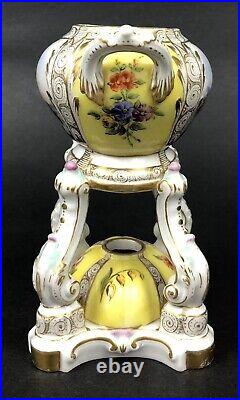
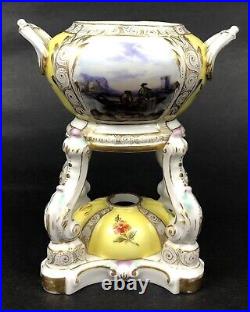

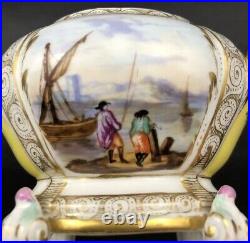

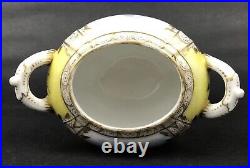
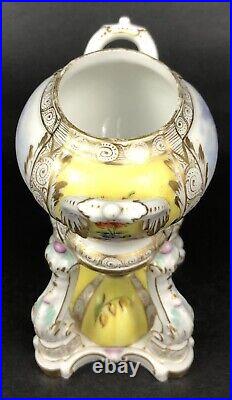

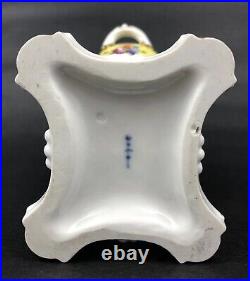
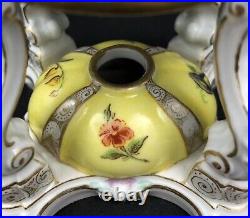


German Porcelain Oval Perfume Burner by KPM Berlin 1820 Watteau Decoration. German Berlin KPM Porcelain, 1820 Circa. Blue sceptre mark, impressed number 5. Hand painted panels to the front and rear.
Watteau Decoration in Rococo style figures in fishing scenes. Hand painted floral decoration to the sides.
In used excellent condition, no chips or dents or restoration. Wear consistent with age and use.Height: 5 ¼ "(13.3 cm), Width: 4 ½" (11.5cm). Please check all photos, they are part of the description. All photos are original photos without any further modification. Every order is handled and packaged with extreme care.
The Königliche Porzellan-Manufaktur Berlin, or KPM (Royal Porcelain Factory, Berlin, in English) was one of the most influential porcelain factories to emerge in 18th-century Germany. Along with Nymphenburg and Meissen.
KPM was the third incarnation of a company originally founded in 1751. By Wilhelm Caspar Wegely to take advantage of the burgeoning market for white gold.
Like Augustus II, Elector of Saxony, the patron of Meissen and a keen collector who described himself as suffering (quite happily) from "porcelain sickness, " Frederick II was proud to refer to himself as KPM's best customer. KPM produces china and figurines to this day, and throughout its long history, it has been a style-setter for elegant tableware, particularly in the 1930's, the period during which their popular patterns Urbino, Urania and Arkadia were designed. Thanks to its royal patronage, KPM had the resources and contacts necessary to establish itself as a leading luxury producer, and supplied Russian and European elites with tableware in the Rococo and Neoclassical styles, as well as monumental vases, and decorative plaques. Many of these objects can be found today in major museums as a result of Frederick II's penchant for sending KPM porcelain as diplomatic gifts throughout Europe.Unlike Meissen, which was known for crafting porcelain sculptures of dazzling complexity, KPM is revered for the precision and splendor of its surface decoration, and for its porcelain plaques depicting scenes from history and mythology. One especially lovely example circa 1790 is a neocalssical-style tea service decorated with gold accents and a grisaille design of figures from the ancient world. By contrast, this boldly colorful narrative cup and saucer set from the 1840's depicts scenes from real life as colorfully as a painting. The set was commissioned by a gentleman for his wife as a tongue-in-cheek gift commemorating her misadventures while in town for a visit to the opera, which resulted in her opera glasses being stolen.
The saucer shows the thief and the glasses, and the cup reveals the scene of the crime in vivid hues. KPM was forced to move from its original location in 1867 due to the building of the new Prussian Parliament building, and this afforded the company the opportunity to create a new factory with the newest equipment and materials of the day. With the growing popularity of Art Nouveau and the western fascination with Asian ceramics, KPM began formulating glazes that evoked the color palette and rich surfaces of Chinese porcelain. By the turn of the century, KPM was exhibiting its wares to a global audience at international expositions. At the end of World War I with the collapse of the Prussian monarchy, KPM was renamed the State Porcelain Manufactory Berlin, continuing to use the name KPM and its use of the cobalt blue sceptre mark that is painted on the bottom of every piece.
By the late 1920's, the designers and craftsmen of KPM were inspired by the tenets of Modernism, particularly the styles of the Bauhaus and the Deutscher Werkbund. During this period, the firm's aim was to produce useful household porcelain for a range of consumers, rather than catering to a small elite. Among the most successful patterns of this era was designer Trude Petri's Urbino line, which is still produced today. In the 1980s, KPM became a private company independent of the state, and began to focus production on the preservation of historic forms, designs, and techniques.KPM continues to collaborate with designers from all over the world, most recently on the Berlin dinnerware service with designer Enzo Mari, and a collaboration with the luxury brands Bottega Veneta and Bugatti. This item is in the category "Collectibles\Decorative Collectibles\Sculptures & Figurines". The seller is "mlxacct" and is located in this country: US. This item can be shipped to United States.
- Pattern: Abstract
- Shape: Oval
- Occasion: All Occasions
- Signed: Yes
- Color: Gold
- Material: Porcelain
- Year Manufactured: 1820
- Additional Parts Required: No
- Subject: Berlin
- Brand: KPM
- Type: Art
- Department: Adult
- Number in Pack: 1
- Autograph Authentication: Professional Sports Authenticator (PSA)
- Theme: Art
- Style: Art Deco
- Original/Reproduction: Original
- Features: Glitter
- Country/Region of Manufacture: Unknown
- Finish: Antique
- Character Family: Action Man
- Handmade: No
- Engraved: No
